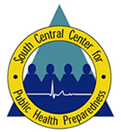
Risk Communication in Public Health Emergencies
Course Description:
This course is an introduction to risk and crisis communication during a public health emergency. The latest theory from the literature and applied concepts from agency recommendations are covered. This course is a hands-on, case-study based application of risk communication theory and practice. Theory and concepts are taught in the context of extensive examples and practice problems interspersed throughout the lectures. By the end of this course, the participant will have learned and practiced a variety of tools in the formation of risk communication messages.
Topics covered in this course include:
- Module 1: Introduction to Risk Communication Theory
- Module 2: Tools for Risk Communication
- Module 3: Failures and Successes in Risk Communication
- Module 4: Risk Communication and the Media
- Module 5: Timeline for Risk Communication: Before, During and After a Crisis
Target Audience
Academic Faculty/Staff, Federal Government Employees, State Government Employees, Local Government Employees, Non-Government Employees and Students
Learning Objectives
Module 1: Introduction to Risk Communication Theory
- Give reasons for the importance of developing messages before an event occurs
- Discuss the ways that information is processed differently under low stress and high stress conditions
- Describe the conditions necessary for mass panic
- List factors that contribute to the formation of risk perception
Module 2: Tools for Risk Communication
- Explain and use the 27/9/3 Rule of Communication
- Explain and use the Know, Do, Go method of message development
- Describe and construct a message map
- Discuss the components of and construct a fully mapped first message
Module 3: Failures and Successes in Risk Communication
- List and explain five ways to fail in delivering an effective risk communication during a crisis
- List and explain five ways to succeed in delivering an effective risk communication during a crisis
Module 4: Risk Communication and the Media
- List four DOs and DON’Ts of dealing with the media
- Write and respond to challenge questions from the media
Module 5: Timeline for Risk Communication: Before, During and After a Crisis
- Discuss the chronology of communication events as they should occur before, during and after a crisis
Instructor:

Amy Vinturella Lafreniere, ScD, MS
Available Credit
- 2.00 Participation/CETulane Professional and Continuing Education (PaCE) awards 2.00 hour(s) of credit for completing Risk Communication in Public Health Emergencies
Price
Required Hardware/software
System Settings
This course is designed to work most effectively if your computer and internet connection meet certain minimal requirements. This course can be accessed using a Windows 10 PC or a Mac with High Sierra1, Mojave, or Catalina. Pop-up blockers should be disabled when viewing the course. Internet Explorer 11 (for Windows 10), or the current version of Google Chrome, Mozilla Firefox, or Apple Safari (for Windows 10 and or Mac) is required. Many of our courses require Java and JavaScript enabled.
Links to External Websites
Links to websites outside this course will open in a new window or tab. Some browsers may minimize the course window. If this occurs, maximize the course window to return to the course.
Adobe Acrobat Reader (for desktops and laptops)
Adobe Acrobat Reader is required to access some documents in this course. If you need to download a free copy of Acrobat Reader, click here.
Internet Connection Speed
A minimum download speed of 1.5 Mbps is recommended for an optimal experience, which is commonly the speed associated with a basic DSL or a cellular/satellite connection. A faster connection, such as cable or fiber service, with further enhance your online experience. A Wi-Fi connection is generally acceptable, but it is dependent upon one of the two services mentioned above. You can check your internet connection speed at http://www.speedtest.net/.

 Facebook
Facebook Twitter
Twitter LinkedIn
LinkedIn Forward
Forward